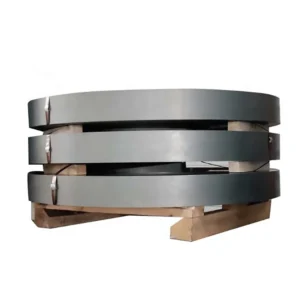Cold Rolled Electrical Steel Market Trends 2025: Global Supply Chain, Innovation, and Energy Sector Demand
Cold rolled electrical steel continues to be one of the most crucial materials enabling the global shift toward clean energy, electrification, and industrial modernization. Used extensively in the manufacturing of transformers, electric motors, generators, and inductors, this high-silicon steel is essential for achieving energy efficiency through low core loss and high magnetic permeability.
As of 2025, the cold rolled electrical steel industry is entering a pivotal phase, marked by rising global demand, increasingly stringent efficiency regulations, and rapid innovation in material science and production processes. Europe, the Middle East, and Asia-Pacific regions are not only expanding their consumption but also investing in localized production capacity and supply chain diversification.
This blog explores the most significant trends shaping the cold rolled electrical steel sector and the implications for manufacturers, utilities, and technology developers worldwide.
1. What Is Cold Rolled Electrical Steel?
Cold rolled electrical steel is a specialized type of steel that undergoes cold reduction, annealing, and coating treatments to enhance its magnetic and mechanical properties. The cold rolling process ensures tight thickness tolerances, superior surface finish, and uniform grain structure. These attributes make it suitable for high-performance applications where magnetic efficiency and reduced energy loss are critical.
It is primarily classified into:
- Grain-oriented (GO) cold rolled electrical steel, used in power transformers
- Non-grain-oriented (NGO) cold rolled electrical steel, used in rotating machines like motors and generators
2. Global Market Growth and Regional Highlights
According to market research firms, the global cold rolled electrical steel market is expected to reach over USD 40 billion by 2030, growing at a CAGR of 6.7%. Key driving factors include the global expansion of renewable energy grids, electric vehicles (EVs), and smart manufacturing equipment.
Europe
European countries such as Germany, France, and Italy are leading the adoption of cold rolled electrical steel through major infrastructure upgrades. The European Union’s Green Deal and energy efficiency directives have compelled utilities to replace aging transformers with newer, high-efficiency models.
Local manufacturers like Thyssenkrupp and ArcelorMittal are expanding capacity and introducing sustainable production lines with hydrogen-based annealing, thus minimizing the carbon footprint of cold rolled electrical steel.
Middle East
The Middle East, particularly Saudi Arabia and the UAE, is embracing electrification through mega-infrastructure projects like NEOM and Masdar City. Cold rolled electrical steel is playing a key role in building substations, decentralized renewable grids, and smart mobility systems. While most of the steel is imported from Europe and Asia, new talks around regional production hubs have begun.
Asia-Pacific
China remains the largest producer and exporter of cold rolled electrical steel, followed by Japan and South Korea. However, with rising geopolitical tension and export control laws, countries in the West are exploring domestic production and partnerships to mitigate risk.
3. Innovation in Cold Rolling Technology
Over the last decade, remarkable advancements have been made in the production and treatment of cold rolled electrical steel. These innovations include:
- Domain refinement through laser scribing
- High-permeability grain-oriented materials
- Ultra-thin gauge lamination (below 0.20 mm)
- Organic insulation coatings for high-frequency motors
- AI-driven quality control systems in cold rolling mills
These advancements have significantly reduced watt loss in transformers and motors, enhancing energy efficiency across end-use sectors. Non-grain-oriented cold rolled electrical steel with high silicon content is also being tailored for EV drive motors that require precision in high-speed performance.
4. Decarbonization and ESG Strategies
Environmental regulations are heavily influencing the future of cold rolled electrical steel. Manufacturers are now focusing on:
- Low-carbon steelmaking (electric arc furnaces, H2-based annealing)
- Water recycling and waste heat recovery
- ESG-compliant sourcing of raw materials
In Europe, the Carbon Border Adjustment Mechanism (CBAM) is prompting both domestic and international steel producers to adopt transparent reporting and lower-emission practices. Middle Eastern buyers, too, are now evaluating suppliers based on ESG metrics, not just price or delivery time.
5. Cold Rolled Electrical Steel in Electric Mobility
Electric vehicle (EV) adoption is accelerating worldwide, and cold rolled electrical steel is central to EV powertrain design. Motors in electric cars must meet stringent efficiency targets and operate under high-frequency conditions. Cold rolled electrical steel used in these motors must offer:
- Low eddy current losses
- High strength-to-weight ratio
- Thermally stable insulation coatings
Tesla, BMW, and several Chinese OEMs are now specifying customized cold rolled electrical steel grades with ultra-low loss characteristics. This trend is also seen in electric buses, rail systems, and urban air mobility (UAM) aircraft.
6. Global Supply Chain and Trade Dynamics
With increased geopolitical risk and pandemic aftershocks, the cold rolled electrical steel supply chain is under pressure. Several trends are emerging:
- Reshoring: Western nations are incentivizing domestic production.
- Diversification: Buyers are sourcing from multiple regions to reduce reliance on a single country.
- Digital logistics platforms are being adopted for real-time inventory and shipment tracking.
Producers in India, Vietnam, and Turkey are becoming important players due to lower labor costs and strategic location between Europe and Asia.
7. Industry Challenges
Despite strong growth, the cold rolled electrical steel sector faces challenges:
- Raw material volatility: Silicon, iron, and alloy additives are subject to price swings.
- Energy costs: Cold rolling and annealing are energy-intensive.
- Labor shortages: Precision metallurgy requires skilled technicians, increasingly hard to find.
To address these issues, producers are investing in automation, predictive maintenance, and in-house workforce development programs.
8. Outlook for 2025 and Beyond
The future of cold rolled electrical steel is closely tied to the global green energy transition. With governments committing to net-zero goals and industries demanding higher efficiency from every component, the importance of cold rolled electrical steel will only grow.
Key forecasts include:
- EV motors and renewable transformers will account for 60%+ of consumption by 2028
- Europe and the Middle East will see >10% YoY import growth
- AI, robotics, and automation will continue to transform cold rolling mills
Cold rolled electrical steel is no longer just an industrial material — it’s a strategic asset for global energy security and climate resilience. Stakeholders who invest in innovation, sustainability, and supply chain agility will lead the next generation of electrification.




